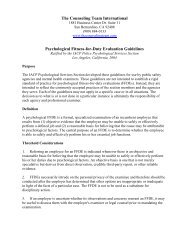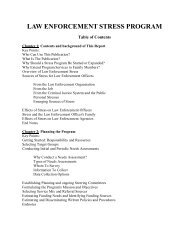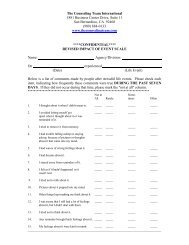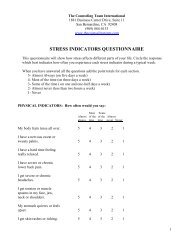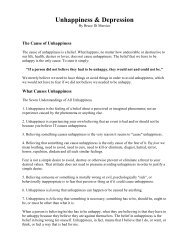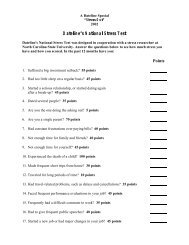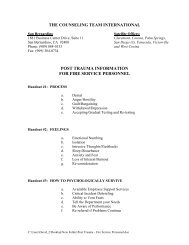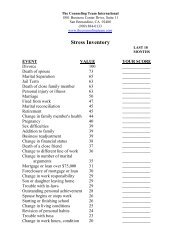ISSUES AND PRACTICES.pdf - The Counseling Team International
ISSUES AND PRACTICES.pdf - The Counseling Team International
ISSUES AND PRACTICES.pdf - The Counseling Team International
You also want an ePaper? Increase the reach of your titles
YUMPU automatically turns print PDFs into web optimized ePapers that Google loves.
Research studies have consistently highlighted two other sources of organizational stress thatcorrectional officers and administrators themselves do not usually identify as stressful: roleconflict[9] and role ambiguity.[10]Role conflict. Researchers define role conflict as the struggle officers engage in toreconcile custodial responsibilities (maintaining security, such as preventing escapes andinmate fights) with their treatment functions (helping inmates rehabilitate themselves).Role ambiguity. Role ambiguity is the uncertainty created by supervisors who expectofficers to "go by the book" and follow all rules to the letter when supervisors and lineofficers alike know that officers must be flexible and use judgment in their interactionswith inmates. One study illustrates this finding:While officers work in a paramilitary organization marked by explicit lines of authority and ahost of formal regulations, their task of managing inmates demands flexibility, the judiciousapplication of discretionary justice, and the ability to secure inmate compliance through informalexchanges which deviate from written rules. Ambiguous and conflicting expectations are a likelyresult and a potential source of stress.[11]Work-related sources of stress<strong>The</strong> research literature and correctional officers agree that many officers find four conditions ofcorrectional work stressful:Threat of inmate violenceCorrectional officers interviewed for this report identified the threat of inmate violence againststaff as a source of stress more frequently than any other single feature of their occupation.Inmate violenceActual violence, including assaults, hostage taking, riots, inmates killing each other, and inmatesuicides, can be a major source of stress for many officers not only during the episodes butafterwards: "Staff anxiety is intensified [after critical incidents] by the aftermath ofrecriminations, scapegoating, blaming, and job insecurity."[12] Except for police officers, thenumber of workplace nonfatal violent incidents is higher per 1,000 employees for correctionalofficers than for any other profession, including taxi drivers, convenience store staff, mentalhealth workers, and teachers. From 1992 to 1996, there were nearly 218 incidents per 1,000correctional officers, for a total of 58,300 incidents.[13]Inmate demands and manipulationMany officers find the constant demands and attempts at manipulation by some inmates to bestressful--for example, requests for cigarettes or extra food with an implicit quid pro quo of




